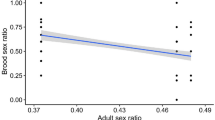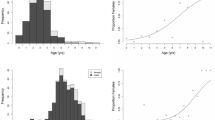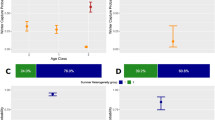Abstract
It has been shown by Fisher that a 1:1 sex ratio should be evolutionary stable as there would otherwise be a frequency-dependent advantage to the rarer sex1. Hamilton pointed out that Fisher's argument depends on the assumption of population-wide random mating, and showed that a female-biased sex ratio was expected in a model in which mating occurred within small local subgroups before population-wide dispersal of mated females. We consider here the sex ratio under some other models of dispersal in a geographically structured population.
This is a preview of subscription content, access via your institution
Access options
Subscribe to this journal
Receive 51 print issues and online access
$199.00 per year
only $3.90 per issue
Buy this article
- Purchase on SpringerLink
- Instant access to full article PDF
Prices may be subject to local taxes which are calculated during checkout
Similar content being viewed by others
References
Fisher, R. A. The Genetical Theory of Natural Selection (Oxford University Press, 1930).
Hamilton, W. D. Science 156, 477–488 (1967).
Taylor, P. D. & Bulmer, M. G. J. theor. Biol. (submitted).
Maynard Smith, J. The Evolution of Sex (Cambridge University Press, 1978).
Taylor, P. D. & Bulmer, M. G. Am. Nat. (submitted).
Clark, A. B. Science 201, 163–165 (1978).
Author information
Authors and Affiliations
Rights and permissions
About this article
Cite this article
Bulmer, M., Taylor, P. Dispersal and the sex ratio. Nature 284, 448–449 (1980). https://doi.org/10.1038/284448a0
Received:
Accepted:
Issue date:
DOI: https://doi.org/10.1038/284448a0
This article is cited by
-
Growing into adulthood—a review on sex differences in the development of sociality across macaques
Behavioral Ecology and Sociobiology (2019)
-
Sex Ratio Elasticity Influences the Selection of Sex Ratio Strategy
Scientific Reports (2016)
-
Asymmetric larval competition in the parasitoid wasp Nasonia vitripennis: a role in sex allocation?
Behavioral Ecology and Sociobiology (2007)
-
Offspring allocation in structured populations with dimorphic males
Evolutionary Ecology (1995)
-
The effects of sex ratio and density on the expression of gender in the polychaeteCapitella capitata
Evolutionary Ecology (1991)



